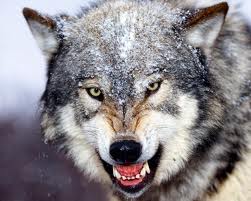When the time comes for a family to say a final goodbye to its faithful and beloved pet, the question may arise: is it legal to bury a pet in one’s own back yard.
The answer to that question is surprisingly different depending upon one’s locale. In rural areas and small towns, generally, the rule of thumb is that you may bury a pet in whatever manner you see fit on private property, so long as you have the owner’s permission. That same rule applies in some other larger cities as well. But be warned: that is just a rule of thumb—and, as rules of thumbs go, it is among the less reliable you will ever hear. The legalities of burying a pet vary greatly from place to place.
Here are some issues that you will likely encounter if you search for the answer to this question in your own case:
First, there is the consideration of whether you own the property on which you intend to bury your pet. If you do not own the property (for example if you are a renter), then the chances are slim that you will be within your legal rights to bury your pet without the property owner’s permission.
This means that, if you are intending to bury your pet on property for which you have permission to do so, then you have passed the first major legal hurdle for this burial.
Next, you must consider environmental factors.
Many localities that allow burial have rules intended to protect the environment. These rules include regulations on the depth of the grave, the materials in which the pet is buried, the manner in which the grave is marked, and the vicinity of the grave to water sources.
In general, the rules are intended to assure that graves are deep enough to protect humans and other animals from disease while shallow enough to avoid underground utility lines.( In some cities, graves for pets must be between two and three feet deep.) The rules also help assure that toxic materials are not used in burial containers such as caskets (or that caskets will biodegrade).They also assure that the graves are properly marked so that future landscapers will not stumble upon remains unexpectedly, thereby exposing themselves to potential disease. And, finally, the rules aim to protect public drinking water sources from contamination caused by the biological breakdown of a pet’s body.
Veterinarians, attorneys, activists and other experts tend to agree that rules regarding the burial of pets are often vague and enforcement is usually lax. One Florida veterinarian, for example, reported on his blog that even government agencies themselves gave him conflicting answers when he asked which statute or ordinance, exactly, was the source of his city’s widely recognized ban on home burials of pets. He found that there was wide disagreement among officials themselves as to whether all burials were illegal, and no one could direct him to the written source of the law. He says he suspects that the situation would be the same in other cities across America. The automatic response from officialdom to the question of “is it legal to bury a pet in your home” is usually, “No!” But, in many cases, officialdom may, in fact, be wrong.
A blogger in England came across this same problem in his country, too. So this man recommends, “Just do what you want to. Burying a pet as you see fit will harm no one, even if it does happen to be against the law in your particular part of the world.” The Englishman says its best to simply follow the age-old axiom, “It’s easier to ask forgiveness than it is to ask permission.” If you ask, you’ll likely be told no, even if the true answer is yes.
All in all, experts seem to agree that, no matter the formal legality, burying a pet at your home, on property that you own can be a healthy thing to do for the emotional spirit of your family. And there is little chance that it will harm the environment. “If dead animals were a serious threat to the environment – water quality and such – most cities would have entire crews out scooping up opossums, skunks, and a lot of other critters 24 hours a day,” one blogger points out.




























